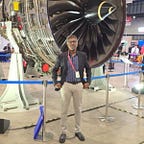A Tale of Two Design Failures
On 15 March, 1979, the fully laden oil tanker — MV Kurdistan began its voyage from Point Tupper, Nova Scotia to Spet Iles, Quebec. It was a cold morning. The temperature was dipping 20° C below the freezing point. However, the oil was kept warm inside the tanker. The captain was growing wary of climate. His sole aim was to cross the thick blinding fog zone as fast as he could.
The sun rose to the zenith but still invisible to the captain. Unable to proceed with violent winds in ice infested waters, the ship was turned around towards the open sea.
Around at 1:50 in the afternoon, he heard a sudden thud and a shudder from the side of No3 wing tanks. There formed a vertical crack from which the oil started escaping into the sea.
While the ship was redirected towards Point Tupper where it started from, there was another shudder around 6:40 in the evening. By 9:30 pm, the bow rose and the ship was broken into two halves by giant waves.
We can’t blame the climate as the ship was built to construction type ice- class 1. The thermal stress caused the varied material expansion on the side. The thorough investigation revealed that a crack found in the port bilge keel, caused by the inadequate welding penetration during the previous service, rendered the ship into two.
Morel of the Story: Poor workmanship
(For more details — https://sciencedirect.com/science/article/pii/B9780080439594500134)
1983 in USA…
A section of 4" gas pipe developed a major crack and ignited a house below which it ran, with a huge fire. The raging flame had almost reduced the abode to ashes. The initial investigation could not convincingly find out the cause of the leakage. In fact the usage of PE pipes, in place of the steel ones, was a new design approach for ease of maintenance.
The experts browsed through the past service reports and figured out nothing significant from them. It had been pinch clamped six years earlier in the region where the leakage developed. Bingo! It struck them something…!
They immediately simulated the pinch clamping on a PE pipe in the lab and found a thumbnail sized fracture on the inner wall of the tube. Further fracture tests indicated that the crack was growing further over a long period of time and burst under a heavy pressure.
After this costly lesson, the new procedure was introduced with the higher grade PE materials. Even now the practice of pinch clamping is in place but with an additional sleeve around the newly serviced spot to relieve the local stress.
Morel of the Story: Unknown information / knowledge gained.
From the above, we find two types of failures…
Type 1: Failures due to negligence and/or poor workmanship.
Type 2: Failures as a result of new design approaches / materials.
Now the question is, out of these two catastrophes, which one is more dangerous from the design point of view?
The answer is type 2 which is more dangerous than type 1. For, type 1 failures can be prevented with the implementation of a strict guidelines whereas type 2 failures are unpredictable and unavoidable.
The two tales of the design failures tell us that whenever one goes for design modifications or material changes, she needs to take a fresh look at the design from the different perspective to prevent the possible failures.
May I tell you a catastrophic incident where the type 1 and the type 2 failures came together to send shock waves across the world?
It was Challenger Space Shuttle disaster…
Type 1: The engineers warned about the potential problems with the O ring (but with little or no data).
Type 2: The limited service experience with the O ring.
The YouTube video of my description is available here –
My YouTube video of the above content
